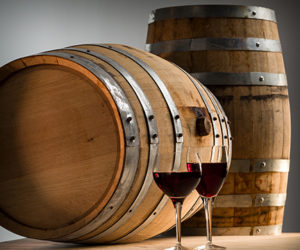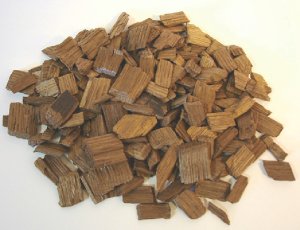Investing in an oak barrel is a big commitment, and taking proper care of its maintenance safeguards the wines that are aged in them. Who better to talk to than those that work with oak barrels on a regular basis? So when you’re ready to purchase an oak barrel or have several months between fills, be sure to heed their maintenance advice.
Jérôme Aubin is the Owner of Artisan Barrels & Tanks in Oakland, California

For those that have made the leap and purchased a new barrel, be sure to leave the barrel in its plastic wrap if you don’t intend to use it immediately. About 3 days prior to filling the barrel remove the plastic wrap and swell. Since wine barrels are not waxed inside, I advise using warm drinkable water and do not close the bung. Leave the water inside for 24 hours. If you notice a lack of water tightness, allow the water to sit for a bit longer. Empty and drain the barrel, placing the bunghole below to fully drain the water. You are now ready to fill your new barrel with wine. If you are using the barrel for spirits, do not fill the barrel up to the top (up to 90%) as the volume of alcohol may increase in case of change of temperature.
Protect empty barrels from spoilage organisms by burning sulfur inside the barrels to replace the air with sulfur dioxide (SO2) gas. Barrels can be stored empty for an indefinite amount of time when properly preserved with sulfur. Once a month, gently sniff the inside of each barrel to determine if SO2 gas is still present. If detected, simply replace the bung. But if you can’t smell any of those odors, burn more sulfur. Be sure to work in a well-ventilated area and avoid inhaling the noxious SO2 gas.
A “sulfur bung” for burning sulfur sticks or discs should be used for this purpose. This device is used to hold burning sulfur and prevent sulfur deposits from falling into the barrel. If deposits are left in the barrel, they will interact with wine during aging, causing hydrogen sulfide (H2S) to form. H2S will impart a rotten egg smell and spoil the wine.
Eventually all barrels need to be retired and learning to recognize the signs of when it’s time to move a barrel along can be key. While a barrel can still hold wine, after 5–7 years, the musty and “wet wood” character that sometimes is tasted in the wine or water should be a clear indication that your supposedly neutral barrel is now actually detrimental to your wine.
Winemakers of larger wineries dealing with hundreds of barrels sometimes train the cellar crew to handle minor repairs like end grain leaks by inserting dowels to stop the leak. Head removal or a porous stave replacement requires a special set of skills and tools. I would recommend using the expertise of a local cooper if barrel repairs are needed. Most hobby winemakers do not necessarily have the time, inclination, or expertise dealing with major barrel repairs. And since hobby winemakers purchase mostly 15–30-gallon (57–114-L) barrels, we usually end up simply replacing the barrel. A new leaky barrel that won’t properly seal would be covered by our 1-year warranty.
Olin Schultz is the Owner and Founder of MoreWine! in Concord, California

More wine is ruined in storage from oxidation than via any other fault. Set a top-up schedule. Top up your barrel 2 weeks after filling for the first time and then at least once every 3 months thereafter. Ideally, use a kegging system with nitrogen or argon to push wine into your barrel. If you don’t have extra wine use lead-free glass marbles to fill the volume.
After emptying, the barrel should be rinsed with hot water to dissolve solids and then allowed to drain and dry with the barrel bung down. When it is dry, burn an appropriately-sized sulfur disc in the barrel and bung it. Storage conditions ideally would be around 70% humidity and 60–70 °F (16–21 °C). If you have a barrel room you can store your empty barrels in there as well. If you are storing for long periods of time, or in not ideal conditions, you should probably rehydrate/swell your barrel in between uses. A telltale sign of a hard to swell barrel is a loosening of the metal hoops. If you see this you should swell/rehydrate, empty, dry, and burn a new sulfur disc. And be sure to use the hot water method described earlier to swell an already used barrel.
Finally, if a used barrel does not smell sweet and oaky, don’t use it. A bad barrel will ruin your wine. If possible it is always a good idea to prefilter your water to remove chlorine and the possibility of TCA production.




